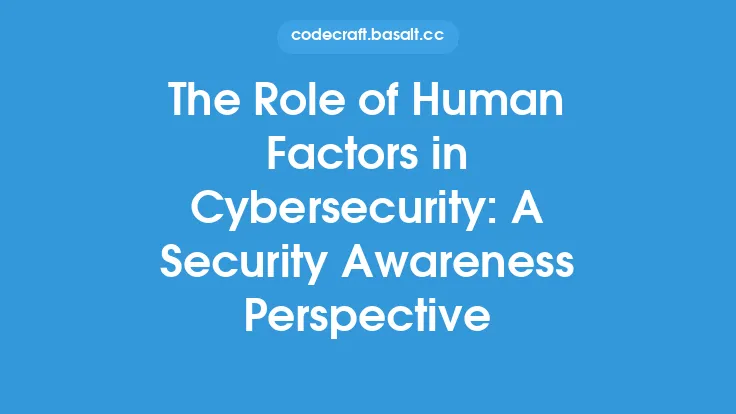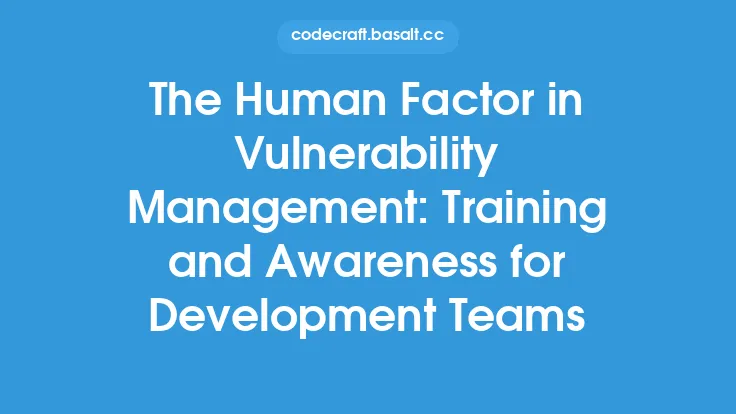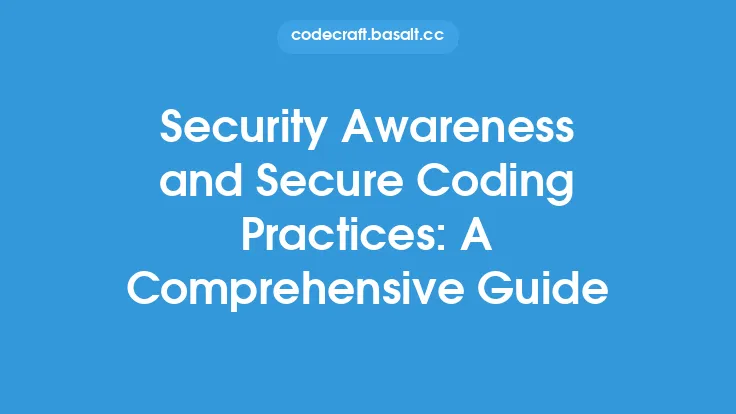Security awareness is a critical component of any organization's cybersecurity strategy, and it is especially important when it comes to mitigating social engineering attacks. Social engineering is a type of cyber attack that exploits human psychology, rather than technical vulnerabilities, to gain access to sensitive information or systems. These attacks can take many forms, including phishing, pretexting, baiting, and quid pro quo, among others. In order to protect against social engineering attacks, it is essential to understand the human element of cybersecurity and to implement effective security awareness measures.
Understanding Social Engineering Attacks
Social engineering attacks are designed to manipulate individuals into divulging sensitive information or performing certain actions that can compromise the security of an organization. These attacks often rely on psychological tactics, such as creating a sense of urgency or authority, to trick victims into complying with the attacker's requests. Phishing, for example, is a type of social engineering attack that involves sending fake emails or messages that appear to be from a legitimate source, in an attempt to trick the victim into revealing sensitive information, such as login credentials or financial information. Pretexting, on the other hand, involves creating a fictional scenario or story to gain the victim's trust and obtain sensitive information.
The Human Element of Cybersecurity
The human element is a critical component of cybersecurity, as it is often the weakest link in an organization's security chain. Humans are prone to making mistakes, and social engineering attacks exploit these mistakes to gain access to sensitive information or systems. In order to mitigate social engineering attacks, it is essential to understand the human element of cybersecurity and to implement effective security awareness measures. This includes educating employees on how to identify and report social engineering attacks, as well as implementing policies and procedures to prevent these attacks from being successful.
Mitigating Social Engineering Attacks
There are several steps that organizations can take to mitigate social engineering attacks. First, it is essential to educate employees on how to identify and report social engineering attacks. This includes providing regular security awareness training, as well as implementing a incident response plan to quickly respond to and contain social engineering attacks. Additionally, organizations should implement policies and procedures to prevent social engineering attacks from being successful, such as verifying the identity of individuals requesting sensitive information and implementing multi-factor authentication to prevent unauthorized access to systems and data.
Technical Measures to Prevent Social Engineering Attacks
In addition to educating employees and implementing policies and procedures, there are several technical measures that organizations can take to prevent social engineering attacks. One of the most effective technical measures is to implement multi-factor authentication, which requires users to provide multiple forms of verification, such as a password and a fingerprint, in order to access systems and data. Additionally, organizations can implement email filtering and spam detection software to block phishing emails and other types of social engineering attacks. Furthermore, organizations can use encryption to protect sensitive information, both in transit and at rest, to prevent unauthorized access in the event of a social engineering attack.
Incident Response and Recovery
In the event of a social engineering attack, it is essential to have an incident response plan in place to quickly respond to and contain the attack. This includes identifying the scope of the attack, containing the damage, and eradicating the threat. Additionally, organizations should have a recovery plan in place to restore systems and data to a known good state, and to prevent future social engineering attacks. This includes conducting a post-incident analysis to identify the root cause of the attack and implementing measures to prevent similar attacks from occurring in the future.
Security Awareness Best Practices
There are several security awareness best practices that organizations can follow to mitigate social engineering attacks. First, it is essential to provide regular security awareness training to employees, which includes educating them on how to identify and report social engineering attacks. Additionally, organizations should implement a security awareness program that includes phishing simulations, security awareness campaigns, and incident response planning. Furthermore, organizations should conduct regular security audits and risk assessments to identify vulnerabilities and implement measures to mitigate them.
Conclusion
In conclusion, security awareness is a critical component of any organization's cybersecurity strategy, and it is especially important when it comes to mitigating social engineering attacks. By understanding the human element of cybersecurity and implementing effective security awareness measures, organizations can protect against social engineering attacks and prevent unauthorized access to sensitive information and systems. Additionally, by implementing technical measures, such as multi-factor authentication and email filtering, organizations can further reduce the risk of social engineering attacks. By following security awareness best practices and staying informed about the latest social engineering tactics and techniques, organizations can stay one step ahead of attackers and protect their sensitive information and systems.





